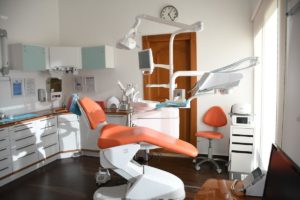Orthodontic treatments were once viewed as cosmetic procedures, but as years have passed, they are now treated as a routine when visiting the dentist. It is estimated that around 60% to 70% of adult Americans visit their dentists regularly. Therefore, since more patients see their dentists, they become more aware of orthodontic treatments. Although more patients seek help from orthodontists to improve their physical appearances, they should also be aware that it is being done to improve oral function as well.
Just like dentists, orthodontists are in demand nowadays. In fact, in 2017 the American Dental Associated estimated that there are around 10,658 orthodontists in the United States. In places like Oviedo, Florida, well-known orthodontists use advanced solutions and materials to teach children to start early with their orthodontics and help adults in saving their teeth. Orthodontic treatments are done in order to solve different oral problems linked to the imperfect position of the teeth, and although they are mostly treated as something related to a person’s aesthetics, they can sometimes result to difficulty in chewing and have a higher chance of damaging the teeth.
Below is a list of some of the most common orthodontic problems.
Crowding
This orthodontic problem happens when there are more teeth compared to space in the dental arch, which results in misalignment. This occurs when the teeth are pushed together, leaving no space in the jaw, and can lead to even more problems like poor biting relationships, difficulty in cleaning, and appearance concerns. In more extreme cases, however, patients may experience thinning of the bone and gums over the roots of the teeth.
Spacing
Spaced teeth happen when the teeth are separated by big gaps. This may be caused by a missing tooth or maybe a cosmetic issue. Aside from looking unattractive, this problem also allows food to get stuck in between the teeth and may result in poor oral hygiene.
Protruding Teeth
Potrusion develops when the teeth are pointed outwards, meaning the upper teeth are sticking out too far forward or the lower teeth is not extended far enough. Different habits such as thumb sucking may lead to an overjet, and lack of orthodontic treatment may even make the problem worse.
Overbite

An overbite occurs when the upper front teeth extend over the lower front teeth or, when the upper jaw points more outwards than the lower jaw. This problem exposes the teeth more to corrosion because when chewing, the lower teeth hit the back of the upper teeth.
Underbite
An underbite may be similar to overbite, but it happens then the lower jaw points outwards, which is caused by a longer lower jaw. This can lead to tooth decay and a higher chance of wear and even jaw pain.
Open bite
This usually happens when the upper teeth and the lower teeth do not meet leaving an open space. The gap between the teeth makes it more difficult to chew and may cause wear on the teeth.
Crossbite
This may be the most common type of malocclusion, which occurs when the upper teeth do not come down in front of the lower teeth, and toward the tongue or the cheek. Aside from the difficulty in chewing and biting, it may also result in misaligned jaw growth and tooth stratification.
These are just some of the most common orthodontic problems. The best way to determine if any of these problems are being experienced and to know how to treat it is through an orthodontist.



















